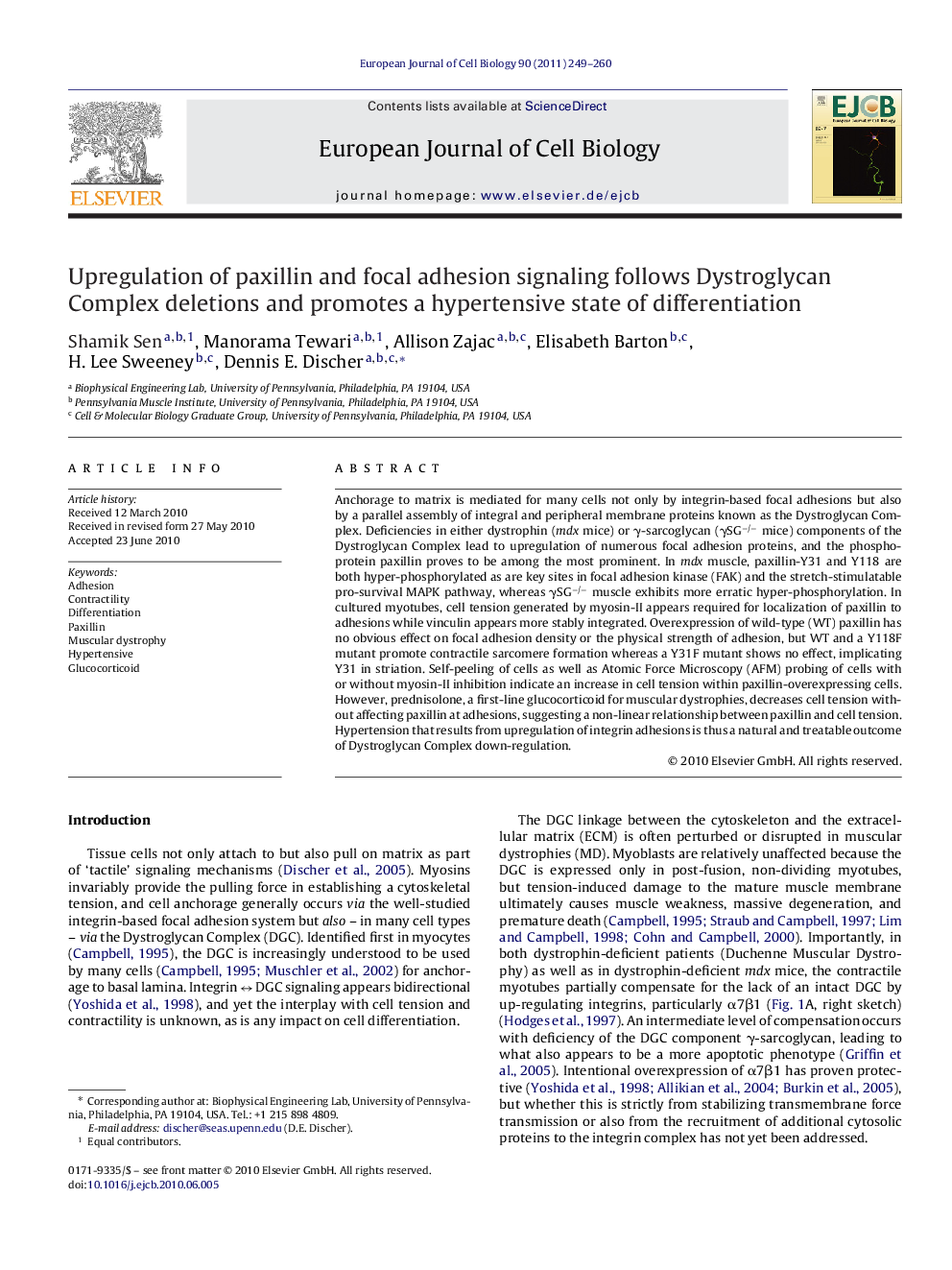| Article ID | Journal | Published Year | Pages | File Type |
|---|---|---|---|---|
| 8470073 | European Journal of Cell Biology | 2011 | 12 Pages |
Abstract
Anchorage to matrix is mediated for many cells not only by integrin-based focal adhesions but also by a parallel assembly of integral and peripheral membrane proteins known as the Dystroglycan Complex. Deficiencies in either dystrophin (mdx mice) or γ-sarcoglycan (γSGâ/â mice) components of the Dystroglycan Complex lead to upregulation of numerous focal adhesion proteins, and the phosphoprotein paxillin proves to be among the most prominent. In mdx muscle, paxillin-Y31 and Y118 are both hyper-phosphorylated as are key sites in focal adhesion kinase (FAK) and the stretch-stimulatable pro-survival MAPK pathway, whereas γSGâ/â muscle exhibits more erratic hyper-phosphorylation. In cultured myotubes, cell tension generated by myosin-II appears required for localization of paxillin to adhesions while vinculin appears more stably integrated. Overexpression of wild-type (WT) paxillin has no obvious effect on focal adhesion density or the physical strength of adhesion, but WT and a Y118F mutant promote contractile sarcomere formation whereas a Y31F mutant shows no effect, implicating Y31 in striation. Self-peeling of cells as well as Atomic Force Microscopy (AFM) probing of cells with or without myosin-II inhibition indicate an increase in cell tension within paxillin-overexpressing cells. However, prednisolone, a first-line glucocorticoid for muscular dystrophies, decreases cell tension without affecting paxillin at adhesions, suggesting a non-linear relationship between paxillin and cell tension. Hypertension that results from upregulation of integrin adhesions is thus a natural and treatable outcome of Dystroglycan Complex down-regulation.
Related Topics
Life Sciences
Agricultural and Biological Sciences
Plant Science
Authors
Shamik Sen, Manorama Tewari, Allison Zajac, Elisabeth Barton, H. Lee Sweeney, Dennis E. Discher,
